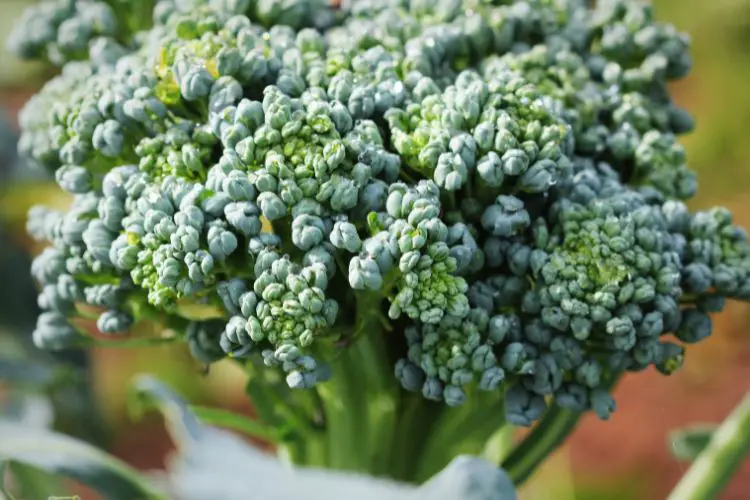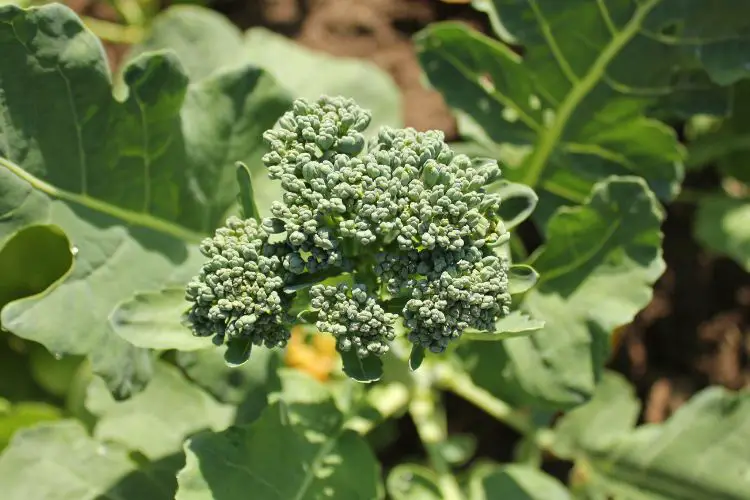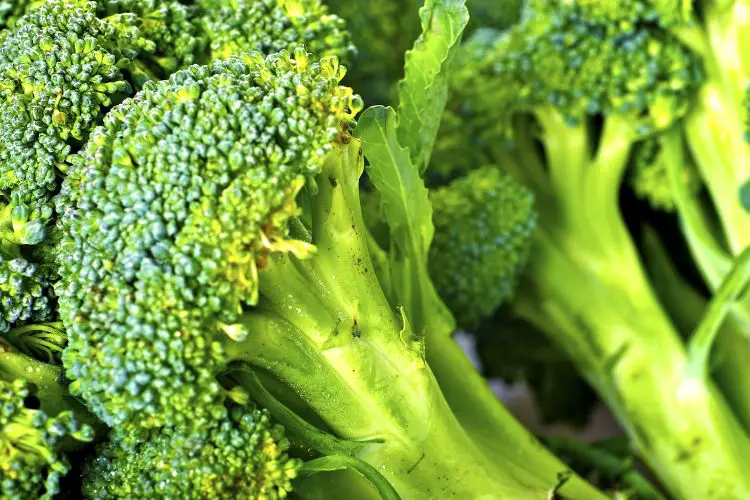Learn how to grow broccoli with this comprehensive guide designed for home gardeners. From planting to harvesting, this informative article will provide you with the best practices for caring for your broccoli plants, ensuring a successful and bountiful harvest. Whether you’re a beginner or experienced gardener, this guide will equip you with the knowledge and skills to cultivate delicious and nutritious broccoli in your own garden.

Introduction to Growing Broccoli
Broccoli, scientifically known as Brassica oleracea var. italica, is a nutritious and delicious vegetable that is a great addition to any home garden. Growing broccoli at home not only provides you with a fresh and organic supply of this superfood but also offers numerous benefits for your health and the environment. In this comprehensive guide, we will walk you through the process of planting, caring for, and harvesting broccoli in your garden, whether you are a beginner or an experienced gardener.
Benefits of Growing Broccoli at Home
Growing broccoli in your garden allows you to have access to fresh and organic produce right at your doorstep. Broccoli is packed with essential nutrients such as vitamins C and K, fiber, and antioxidants, making it a valuable addition to your diet. Additionally, cultivating broccoli at home reduces the carbon footprint associated with transporting produce from farms to stores, contributing to a more sustainable and eco-friendly lifestyle.
Ideal Climate and Soil Conditions for Broccoli
Broccoli thrives in cool weather and requires full sun for optimal growth. It is best to plant broccoli in early spring or late summer, depending on your local climate. When it comes to soil, broccoli prefers well-draining, fertile soil with a pH level between 6.0 and 7.0. Amending the soil with organic matter such as compost or aged manure can help provide the necessary nutrients for healthy broccoli growth.
Selecting Broccoli Varieties for Your Garden
When selecting broccoli varieties for your garden, you will come across different types such as Calabrese, Sprouting, and Romanesco. Each variety has its unique characteristics, including head size, color, and flavor. Consider factors such as your local climate, available space, and personal preference when choosing the best variety for your garden. For example, Calabrese is a popular variety known for its large, blue-green heads, while Sprouting broccoli produces an abundance of small, tender florets.
Planting Broccoli Seeds or Transplants
Preparing the Soil for Planting Broccoli

Before planting broccoli seeds or transplants, it is essential to prepare the soil to create an optimal growing environment for your plants. Start by loosening the soil to a depth of 12-15 inches and removing any debris or weeds. Incorporating a balanced fertilizer into the soil can help provide the necessary nutrients for the broccoli plants.
Planting Broccoli Seeds or Transplants
When planting broccoli seeds, sow them ½ inch deep and 3 inches apart in rows, keeping the soil consistently moist until the seeds germinate. If using transplants, set them in the ground at the same depth as they were in their containers, spacing them 18-24 inches apart in rows. Water the transplants thoroughly after planting to help them establish in their new environment.
Caring for Broccoli Plants
Watering and Fertilizing Broccoli Plants
Broccoli plants require consistent moisture to thrive, especially during dry periods. Water the plants deeply at least once a week, ensuring that the soil remains consistently moist but not waterlogged. Applying a balanced fertilizer high in nitrogen can help promote healthy leaf and head development.
Protecting Broccoli from Pests and Diseases
Common pests that may affect broccoli plants include aphids, cabbage worms, and flea beetles. Regularly inspecting your plants for signs of pest infestation and using organic pest control methods such as neem oil or insecticidal soap can help protect your broccoli from damage. Additionally, practicing crop rotation and maintaining good garden hygiene can help prevent the spread of diseases such as clubroot and downy mildew.
Managing Weeds in the Broccoli Garden
Weeds compete with broccoli plants for nutrients and water, so it is essential to keep the garden free of weeds. Mulching around the plants with organic materials such as straw or wood chips can help suppress weed growth and retain soil moisture, creating a more favorable environment for the broccoli plants.
Harvesting and Storing Broccoli
Signs that Broccoli is Ready for Harvest
Broccoli is ready for harvest when the heads are firm, compact, and dark green in color. Avoid harvesting the heads when the florets start to separate or turn yellow, as this indicates overripeness. It is best to harvest broccoli in the morning when the heads are still cool from the overnight temperatures.
Proper Harvesting Techniques for Broccoli
To harvest broccoli, use a sharp knife to cut the main head at an angle about 5-6 inches below the head, allowing some leaves to remain on the plant to encourage side shoots to develop. After harvesting the main head, smaller side shoots will continue to develop, providing you with a continuous harvest of fresh broccoli throughout the season.
Storing Harvested Broccoli
After harvesting, store broccoli in the refrigerator, preferably in a perforated plastic bag to maintain humidity. Freshly harvested broccoli can be stored for up to 10 days, but for longer-term storage, blanching and freezing the florets can help preserve them for several months.
Troubleshooting Common Broccoli Growing Issues
Addressing Common Problems with Broccoli Plants

Common issues that may arise when growing broccoli include bolting, which is the premature formation of flower stalks, and uneven head development. These issues can be caused by stress factors such as temperature fluctuations and inadequate moisture. Proper care and maintenance, including consistent watering and providing shade during hot weather, can help prevent these problems.
Tips for Preventing and Managing Broccoli Growing Issues
To prevent common broccoli growing issues, it is essential to monitor the plants regularly for any signs of stress or disease. Maintaining a consistent watering schedule, providing adequate nutrition, and promptly addressing any pest infestations can help keep your broccoli plants healthy and productive.
Conclusion and Final Tips for Growing Broccoli
In conclusion, growing broccoli in your garden can be a rewarding experience that provides you with a fresh and nutritious supply of this versatile vegetable. By following the guidelines outlined in this comprehensive guide, you can successfully cultivate broccoli plants and enjoy a bountiful harvest throughout the growing season. Remember to select the best broccoli variety for your garden, provide proper care and maintenance, and promptly address any growing issues to ensure the success of your broccoli cultivation.
Final Thoughts on Growing Broccoli
Growing broccoli at home allows you to have access to a nutrient-rich and flavorful vegetable that can be enjoyed in a variety of culinary dishes. Whether steamed, roasted, or added to salads and stir-fries, homegrown broccoli adds a fresh and wholesome element to your meals.
Additional Tips for Successful Broccoli Cultivation
Consider joining an affiliate advertising program such as the Amazon Services LLC Associates Program, designed to provide a means for sites to earn advertising fees by advertising and linking to products on Amazon.com. Accessing digital libraries and resources on broccoli cultivation can also enhance your knowledge and skills, allowing you to become a more proficient broccoli gardener. Additionally, incorporating natural remedies such as apple cider vinegar water to deter pests and promote plant health can contribute to a successful broccoli growing experience.
